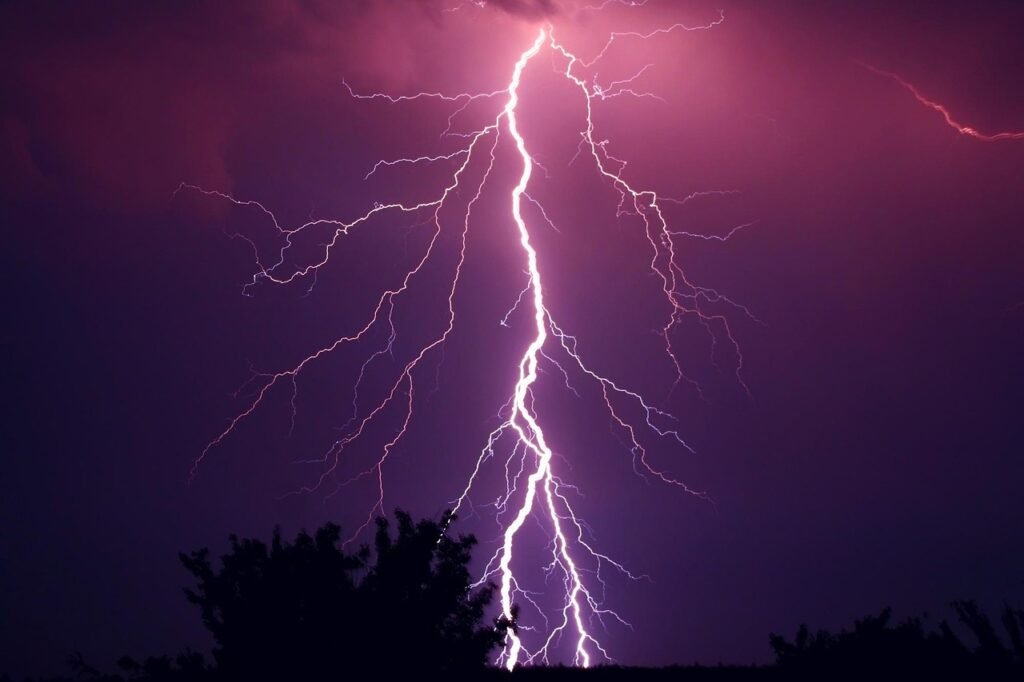Severe thunderstorms have returned to the UK, prompting widespread warnings and reminders of the risks they bring. As temperatures soar and humid conditions persist, millions of people are experiencing a spell of unsettled weather that is set to disrupt daily life from London to Newcastle. The Met Office has issued yellow and amber alerts, urging caution as intense rainfall, lightning, and hail move across the country. With severe weather warnings dominating news searches, it is essential to understand what’s coming, how to stay safe, and what experts recommend for the days ahead.
Current Warning Areas and What to Expect
Thunderstorm warnings cover much of England, with both yellow and amber alerts in place through the weekend. Regions most at risk include the southeast, East Midlands, Yorkshire, Lincolnshire, and the northeast, but the area of impact is broad and evolving.
Amber warnings have been specifically issued for southeast England, covering London and surrounding counties from early Saturday through late Sunday morning. A yellow warning applies to a wider area, stretching from midnight Friday across much of England until Saturday evening. Scotland, especially eastern parts, is also under a separate yellow warning from Saturday afternoon.
The Met Office predicts that some areas could see as much as 70 to 100 millimetres of rain within just a few hours in isolated places—especially over urban areas that struggle to absorb heavy rainfall. Localised deluges could result in rapid flooding, including flash floods where rain falls onto dry, compacted ground that cannot soak water quickly. Alongside the rainfall, severe thunderstorms may bring frequent lightning, large hail, and gusty winds, all of which may damage buildings or vehicles and threaten personal safety.
A Closer Look at Recent Trends and Meteorological Factors
The surge in thunderstorm activity is tied to particularly warm and humid air streaming northward from continental Europe. While temperatures this week are expected to climb to or exceed 30°C in some central and southern areas, the real talking point has been the scale and suddenness of the storms. Meteorologists explain that these volatile conditions allow thunderstorms to become “organised” and long-lived, capable of producing intense rainfall over a short period.
Recent weather data shows that the last time an amber warning covered greater London was during Storm Henk in January 2024. This time, the emphasis is on short-term surface water issues because so much of London is paved and densely built up, which prevents rainwater from soaking away efficiently.
Community Impact: Travel, Infrastructure, and Daily Life
When thunderstorm warnings are in force, they bring disruption to more than just those caught in a downpour. The Met Office and British Red Cross warn of a range of likely impacts:
Disruption to Travel: Train and bus services may be delayed or suspended, and road closures could occur due to flooding or debris. Driving conditions become hazardous, with sudden water on roads sharply increasing the risk of accidents.
Power Cuts and Service Loss: Explosive thunderstorms can damage infrastructure, leading to power outages, disruption of mobile services, and loss of access to the internet or emergency communications.
Property Damage: Surface flooding, lightning strikes, or hail may harm homes, businesses, and vehicles. Even well-built properties are at risk, particularly in low-lying or densely populated areas.
Isolation and Emergency Response: Some remote communities may become cut off, with emergency services stretched during periods of high call-outs. The public is urged to check on vulnerable neighbours and relatives, especially those living alone or without reliable transport links.
Expert Insights and Public Guidance
According to the Met Office and emergency services, the risks during a severe thunderstorm are very real, but careful preparation and timely action can reduce potential harm. The message remains clear: stay informed, stay indoors if possible, and never underestimate the power of extreme weather.
Chief Meteorologist Andy Page reminds the public, “Intense rainfall will impact parts of the UK… Those travelling for the start of school holidays must take extra care, as conditions can change quickly and warnings may be upgraded or extended.”
Safety at Home and in the Community
Inside your home, unplug non-essential appliances to prevent damage from power surges and keep away from windows that might shatter in strong gusts or hail. Secure pets, avoid bathing or showering during lightning activity, and never use metal objects outdoors.
If caught outdoors with no shelter, the safest option is to crouch low on the ground with feet close together, minimising contact with the earth—but never lie completely flat. Move away from open water, hilltops, and tall or isolated trees, as these are prime lightning targets.
Those living in flood-prone or low-lying areas should prepare a flood plan and be ready to act quickly if local authorities issue an evacuation order. Assemble an emergency bag with vital documents, water, and first aid supplies.
Looking Ahead: The Weekend and Ongoing Advice
The thunderstorm warnings are set to remain active over the weekend, with forecasters closely monitoring conditions and updating guidance as needed. Summer school holidays have begun in parts of England and Wales, bringing extra traffic and outdoor activities. Organisers of events such as festivals and sports days are advised to watch weather updates and be prepared to alter plans on short notice. Temperatures may remain high even as storms roll through, so humidity and heat stress are added factors to consider, especially for young children, older adults, and those with medical conditions.
Conclusion
Severe thunderstorm warnings serve as a vital reminder of how quickly UK weather can change, and how important it is to take official advice seriously. By paying attention to the latest forecasts and warnings, preparing homes and travel plans, and staying alert to changing conditions, people across the country can minimize risk and keep themselves and their families safe. The British weather may be unpredictable, but informed, calm action ensures that no one is caught out when the skies open and the storms sweep through.
To read more click here

